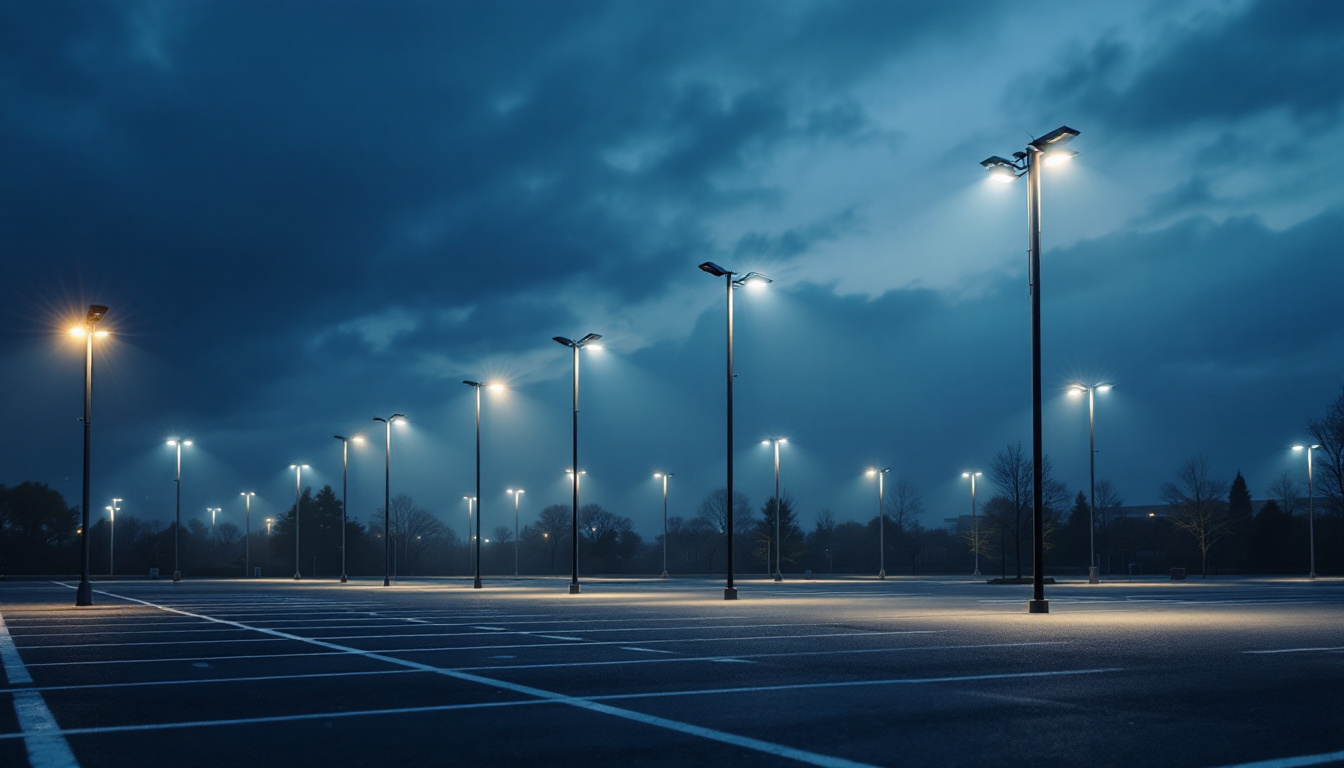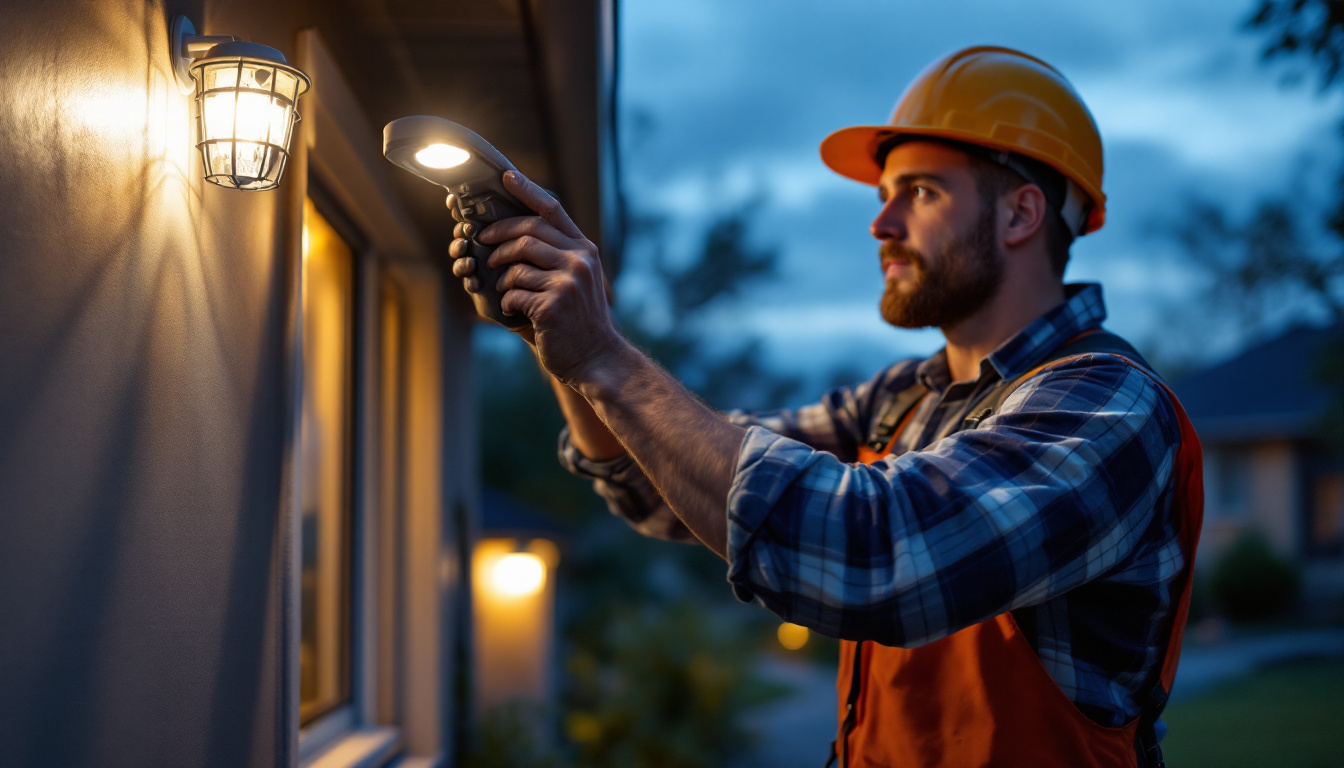

In the realm of outdoor lighting, parking lot poles and lights play a crucial role in ensuring safety, visibility, and aesthetics. For lighting contractors, understanding the intricacies of these components is essential for delivering high-quality installations that meet client expectations. This guide aims to provide a comprehensive overview of parking lot poles and lights, covering everything from types and materials to installation tips and maintenance practices.
Parking lot lighting serves multiple purposes, including enhancing safety for pedestrians and vehicles, deterring crime, and improving the overall appearance of the space. As a lighting contractor, it is vital to grasp the fundamental aspects of parking lot lighting to design effective solutions. A well-lit parking lot can significantly influence customer satisfaction and retention, making it an essential consideration for businesses that rely on foot traffic.
Proper lighting in parking lots not only increases visibility but also contributes to a sense of security. Well-lit areas discourage criminal activity and provide reassurance to users, making them feel safer when navigating the space. Moreover, adequate lighting can help prevent accidents, ensuring that pedestrians and drivers can see potential hazards. Studies have shown that well-lit parking areas can reduce crime rates by up to 30%, emphasizing the critical role that lighting plays in urban safety. Additionally, good lighting can enhance the aesthetic appeal of a property, creating a welcoming environment that encourages customers to return.
Various types of lights can be utilized in parking lots, each with its own advantages and applications. Common options include LED, HID, and fluorescent lights. LED lights are increasingly popular due to their energy efficiency and long lifespan, making them a cost-effective choice for clients. HID lights, while less efficient, provide a bright output suitable for larger areas. Fluorescent lights, although not as commonly used in outdoor settings, can still be effective in specific applications. Furthermore, solar-powered lights are gaining traction as a sustainable option, allowing for reduced energy costs and minimal environmental impact. These lights harness solar energy during the day and provide illumination at night, making them an excellent choice for eco-conscious projects.
Effective lighting design involves more than just selecting the right fixtures. Contractors must consider factors such as the layout of the parking lot, the height of the poles, and the spacing between lights. A well-planned design will ensure uniform illumination, minimizing dark spots and shadows that could compromise safety. Additionally, it is crucial to take into account the color temperature of the lights, as warmer tones can create a more inviting atmosphere, while cooler tones may enhance visibility. Incorporating smart lighting solutions, such as motion sensors and dimming capabilities, can further optimize energy use and adapt to changing conditions, ensuring that the parking lot remains safe and functional at all times. By integrating these elements, contractors can create a comprehensive lighting plan that meets both safety and aesthetic needs, ultimately contributing to a better user experience.
The poles that support parking lot lights come in various types and materials, each suited for specific applications and environments. Understanding these options is crucial for selecting the right poles for a project.
Parking lot poles are typically made from materials such as steel, aluminum, and fiberglass. Steel poles are durable and can withstand harsh weather conditions, making them a popular choice for many contractors. Aluminum poles are lightweight and resistant to corrosion, offering a good balance between durability and ease of installation. Fiberglass poles, while less common, provide excellent resistance to environmental factors and are often used in coastal areas.
The height of parking lot poles can significantly impact the effectiveness of the lighting. Taller poles are generally used in larger parking lots to ensure adequate coverage, while shorter poles may suffice for smaller areas. Additionally, the design of the poles should complement the overall aesthetic of the property, considering factors such as color and finish.
Proper installation of parking lot poles is critical to ensuring their longevity and effectiveness. Contractors should follow best practices, including securing the poles in concrete footings and ensuring they are plumb and level. Additionally, attention should be paid to the electrical connections to guarantee safety and functionality.
Advancements in lighting technology have introduced various control options that can enhance the functionality of parking lot lights. Understanding these technologies can provide contractors with the tools to offer more efficient and adaptable lighting solutions.
Smart lighting systems utilize sensors and connectivity to adjust lighting levels based on real-time conditions. For instance, lights can dim during low-traffic hours and brighten when motion is detected. This not only saves energy but also extends the lifespan of the fixtures, making it an attractive option for clients looking to reduce operational costs.
Photocells and timers are essential components in parking lot lighting systems. Photocells automatically adjust lighting based on ambient light levels, ensuring that lights turn on at dusk and off at dawn. Timers can be programmed to turn lights on and off at specific times, providing flexibility in managing energy consumption.
Integrating parking lot lighting with security systems can enhance safety and deter criminal activity. By synchronizing lights with security cameras and alarms, contractors can create a comprehensive safety solution that offers clients peace of mind. This integration can also provide valuable data analytics, allowing for better management of the lighting system.
Regular maintenance is essential for ensuring the longevity and effectiveness of parking lot lighting systems. Contractors should educate clients on the importance of routine inspections and upkeep to avoid costly repairs and replacements.
Conducting routine inspections allows contractors to identify potential issues before they escalate. Inspections should include checking for burnt-out bulbs, damaged fixtures, and signs of wear on poles. Regular maintenance can prevent unexpected outages and ensure that the lighting remains effective.
Keeping parking lot lights clean is crucial for maintaining optimal performance. Dust, dirt, and debris can accumulate on fixtures, reducing their brightness and effectiveness. Contractors should recommend a cleaning schedule to clients, ensuring that lights are regularly maintained to provide consistent illumination.
As technology advances, older lighting systems may become outdated. Contractors should stay informed about the latest developments in lighting technology and recommend upgrades when appropriate. Upgrading to more energy-efficient fixtures or smart lighting systems can provide significant benefits to clients, including reduced energy costs and improved performance.
Safety is paramount in parking lot lighting design and installation. Contractors must adhere to various regulations and standards to ensure that their projects meet safety requirements.
Each municipality may have specific codes and regulations regarding outdoor lighting. It is essential for contractors to familiarize themselves with these requirements to ensure compliance. Adhering to local codes not only ensures safety but also protects contractors from potential liabilities.
Light pollution is a growing concern in many communities, and contractors should strive to minimize its impact. This can be achieved through thoughtful design choices, such as using shielded fixtures that direct light downward and reduce glare. By taking steps to minimize light pollution, contractors can enhance the reputation of their services and contribute to community well-being.
Incorporating emergency lighting solutions into parking lot designs is essential for ensuring safety during power outages or emergencies. These systems can include battery backup lights or solar-powered fixtures that remain operational when the main power source fails. Providing clients with options for emergency lighting can enhance their peace of mind and improve overall safety.
When planning parking lot lighting projects, understanding the associated costs is crucial for both contractors and clients. Various factors can influence the overall budget, and transparency in pricing can foster trust and satisfaction.
The initial installation costs for parking lot lighting can vary widely based on factors such as the size of the lot, the type of fixtures selected, and the complexity of the installation. Contractors should provide detailed estimates that outline all potential expenses, including materials, labor, and any necessary permits.
In addition to initial costs, contractors should educate clients about the long-term operational costs associated with parking lot lighting. Energy consumption, maintenance, and potential upgrades should all be factored into the overall budget. By highlighting the benefits of energy-efficient lighting options, contractors can help clients make informed decisions that align with their financial goals.
Investing in high-quality parking lot lighting can yield significant returns over time. Improved safety and visibility can lead to increased usage of the parking facility, potentially boosting revenue for businesses. Additionally, energy-efficient fixtures can result in substantial savings on electricity bills, further enhancing the ROI for clients.
Parking lot poles and lights are integral components of outdoor lighting solutions that ensure safety, security, and functionality. For lighting contractors, understanding the various aspects of these systems—from types and materials to installation and maintenance—is essential for delivering high-quality services. By staying informed about the latest technologies and best practices, contractors can provide clients with effective and efficient lighting solutions that meet their unique needs.
Ultimately, investing in quality parking lot lighting not only enhances the aesthetic appeal of a property but also contributes to a safer environment for all users. As the demand for effective outdoor lighting continues to grow, lighting contractors have the opportunity to play a pivotal role in shaping the future of parking lot designs.
Ready to elevate your lighting projects with the highest quality parking lot poles and lights? Look no further than LumenWholesale, where we provide contractors with spec-grade lighting products at unbeatable wholesale prices. Our commitment to cutting out the middleman means you get superior lighting without the inflated markups, and our wide selection adheres to the strictest industry standards for reliability and performance. Plus, with free shipping on bulk orders, you can enjoy premium lighting solutions at the best value — all without hidden fees or compromises. Don’t settle for less; choose LumenWholesale for quality, affordability, and convenience. Wholesale Lighting at the Best Value is just a click away.

Discover essential insights into chandelier lighting that every contractor should know.

Discover why purchasing LED retrofit lighting kits in bulk from local distributors might not be the best choice.

Discover essential compliance guidelines and expert insights for lighting contractors working with outdoor sensor lights.

Discover essential insights into landscape lighting that every contractor should master.
Get notified when NEW deals are released.
Optimize your budget with wholesale discounts.
Only top-quality, specification-grade lighting products.
No additional costs at checkout - what you see is what you pay.
We understand the unique needs of contractors.